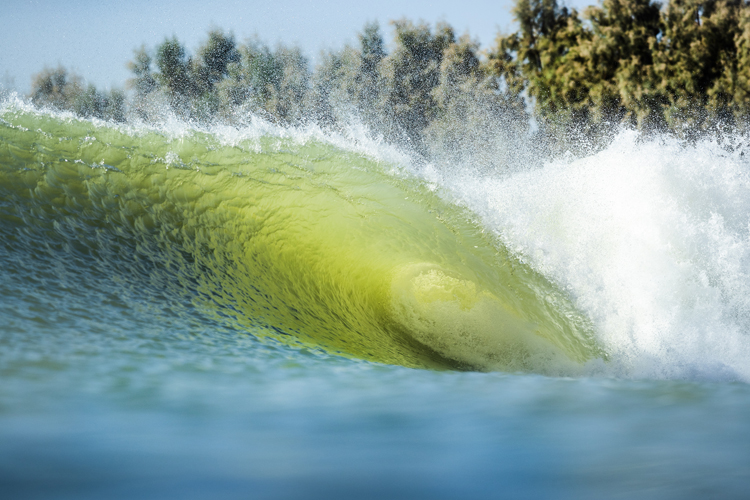Scripps Oceanography scientists developed an instrument to measure the inside of an overturning wave and other deep and shallow water processes.
Meet Wavedrifter, a small spherical floating device that measures wave steepening and overturning kinematics and the subsequent transition to turbulence.
Technically speaking, it's a low-cost inertial measurement unit (IMU).
Modern wave buoys are already effective in capturing wave spectra and directional moments in the ocean swell and are equipped with inertial measurement units and telemetry.
However, they could not fully decode the context of steep, overturning, or broken waves. In other words, they are not water-following (or Langrarian).
Scripps physical oceanographer Falk Feddersen led a team of researchers from Naval Postgraduate School and Kelly Slater Wave Co. to test the Wavedrifter at the Surf Ranch in Lemoore, Central California.
Due to the fact that the barreling waves break in the same spot, scientists had the perfect control mechanism for the experiment.
The study supported by the Mark "Marko" Walk Wolfinger Surfzone Research Fund aims to analyze the 360-degree behavior of a breaking wave and its potential impact on coastal ecosystems and shoreline changes.
Nevertheless, its findings can also be helpful in improving wave pool performance and even wave energy production.
But how does the Wavedrifter work?
Researchers release the device as breaking waves approach.
The Wavedrifter then observes the complex vortex structures created when waves break, as these swirling patterns hold crucial insights into wave dynamics.
According to Falk Feddersen, Wavdrifter is more compact, versatile, technologically sophisticated, less expensive, and features water-following properties.

Deploying Wavedrifter
Six Wavedrifters were deployed in the wave pool with precise spacing.
Before the waves started to peel across the freshwater lake, a float was anchored at a location prior to wave overturning, and a polypropylene line with one-meter separation distance markers was attached to it.
Three swimmers were responsible for positioning Wavedrifters on the water's surface at the designated distance markers from the line prior to the arrival of the wave.
Just before the wave approached, the swimmers let go of the Wavedrifters.
The process of releasing the Wavedrifters was recorded from above with a DJI Phantom unmanned aircraft system (UAS) operating at 30 Hz.
Additionally, a swimmer equipped with a GoPro camera, recording at 120 Hz, captured the movements of the Wavedrifters during the overturning of the wave.
The video footage from both the UAS and the waterproof action camera was synchronized to Coordinated Universal Time (UTC), which allowed it to be aligned with the Wavedrifter observations.

Limitations and Potential Improvements
The launch version has a few limitations that should be improved and fine-tuned in the future.
For instance, it lacks telemetry and can be easily lost.
One solution could be the use of a thin leash attached to a swimmer or to a larger and far more visible float, allowing the device to be recovered.
Another option is to place a small active RFID tag into the Wavedrifter that would broadcast its position so that a recovery team within 50 meters could locate and recover the instrument.
Battery life is just over an hour, which limits the duration of experiments.
